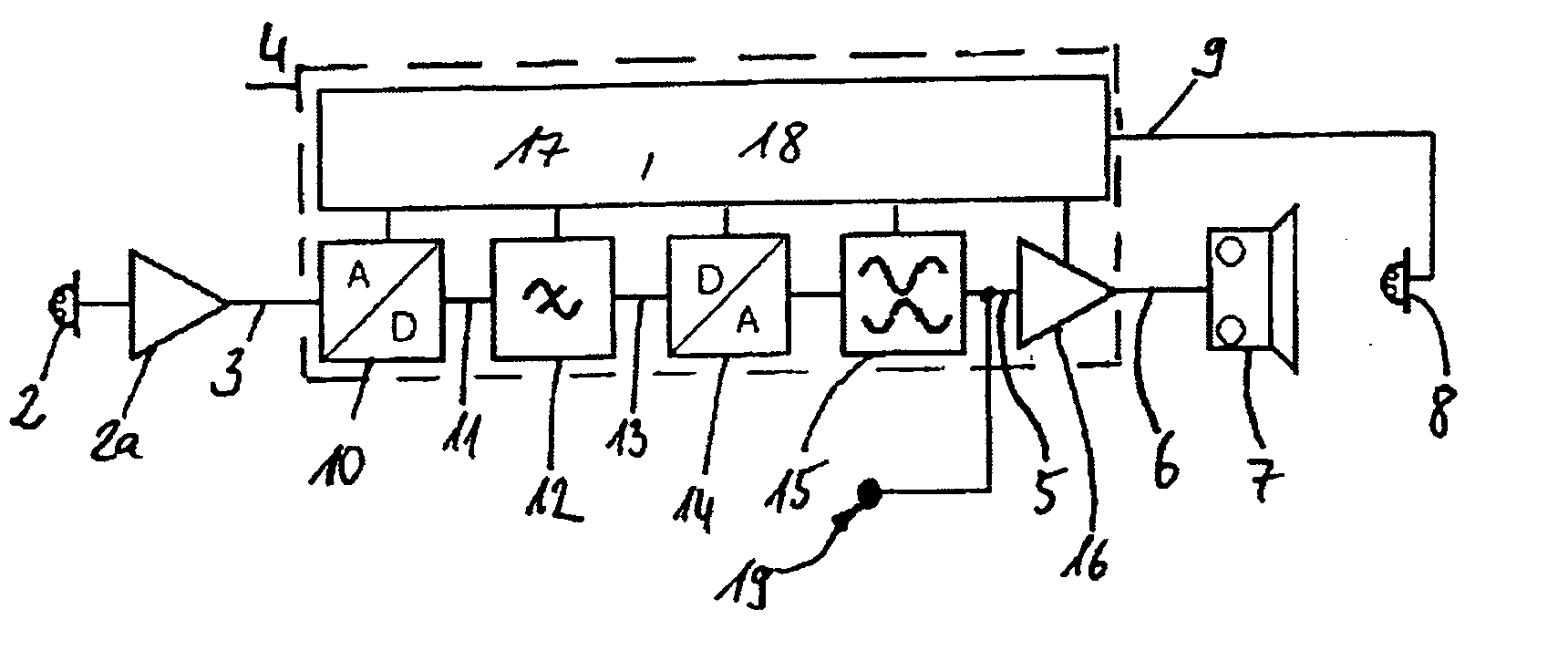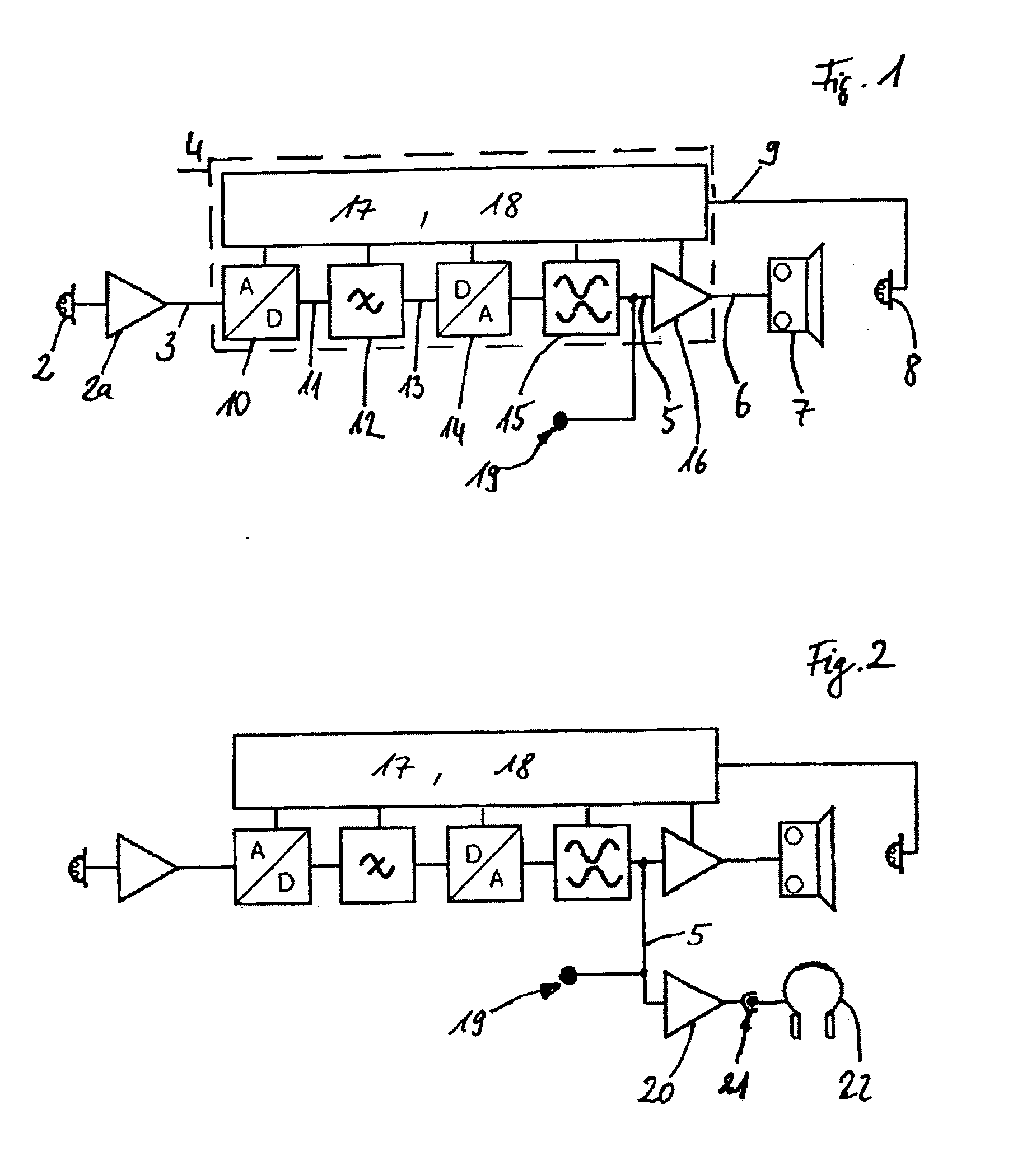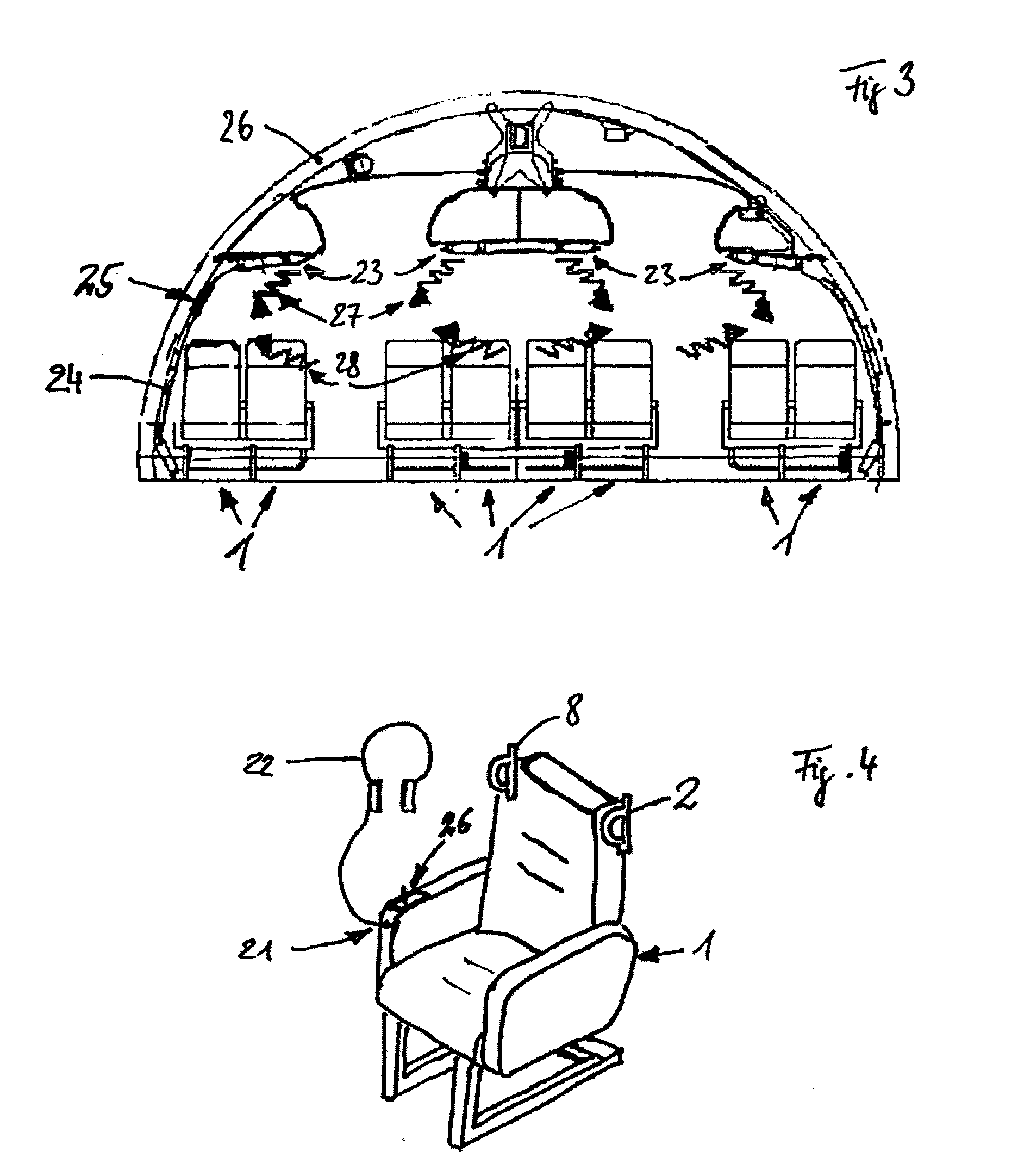Active noise reduction in the proximity of a passenger seat
a passenger seat and active noise technology, applied in the direction of noise generation, ear treatment, instruments, etc., can solve the problems of difficult to damp structure-borne noise with built-in isolating materials, the passenger cabin of commercial airplanes is subject to various noise emissions, and the effect of increasing weight and reducing active noise is extremely difficul
- Summary
- Abstract
- Description
- Claims
- Application Information
AI Technical Summary
Benefits of technology
Problems solved by technology
Method used
Image
Examples
Embodiment Construction
[0020] In principle, the following thought is basic to the device according to an exemplary embodiment of the invention. Each disturbing noise, at least to a certain extent, can be erased by a negative-feedback vibration of the same frequency. This anti-sound has to encounter the disturbing noise without a time delay, in counter-phase and with the same amplitude. Ideally, the disturbing sound is thereby completely erased.
[0021] In practice, a complete erasure of the disturbing sound will not occur, since the spectrum of the disturbing sound is combined from a variety of frequencies. A reduction of the local disturbing sound by 10 dB(A) may be realised. This means cutting in half the loudness of the disturbing noise nonetheless. For example, in order not to include in the noise reduction announcements or presentations of music in the range of the passenger, the portion of the disturbing frequencies has to be analysed. Only these extracted frequency parts may be used for the generati...
PUM
 Login to View More
Login to View More Abstract
Description
Claims
Application Information
 Login to View More
Login to View More - R&D
- Intellectual Property
- Life Sciences
- Materials
- Tech Scout
- Unparalleled Data Quality
- Higher Quality Content
- 60% Fewer Hallucinations
Browse by: Latest US Patents, China's latest patents, Technical Efficacy Thesaurus, Application Domain, Technology Topic, Popular Technical Reports.
© 2025 PatSnap. All rights reserved.Legal|Privacy policy|Modern Slavery Act Transparency Statement|Sitemap|About US| Contact US: help@patsnap.com



